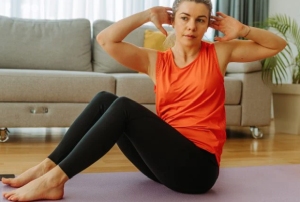 John Patterson – In a world where the persistent grip of chronic pain is often accompanied by the haunting shadows of depression, a glimmer of hope emerges, promising relief and resilience.
John Patterson – In a world where the persistent grip of chronic pain is often accompanied by the haunting shadows of depression, a glimmer of hope emerges, promising relief and resilience.
Within the corridors of the medical realm, a groundbreaking study, unveiled in the revered Journal of the American Osteopathic Association, has cast light upon the transformative potential that lies within the realm of Mindfulness-Based Stress Reduction (MBSR) courses.
As these courses extend a lifeline to individuals locked in a relentless battle with chronic pain and its emotional entanglements, the study’s findings resonate far beyond the realm of scientific inquiry.
With each revelation, the tendrils of hope intertwine with the tendrils of healing, offering not just an alleviation of physical discomfort, but a pathway to profound well-being and wholeness that transcends the boundaries of traditional medicine.
The Silent Epidemic: Chronic Pain’s Stealthy Toll
Chronic pain, a silent epidemic affecting a staggering 100 million individuals in the United States alone, isn’t just a physical ailment. It’s an intricate web that tangles physical discomfort with emotional distress, exerting a substantial financial burden of approximately $635 billion annually.
This study, conducted within a semi-rural community in Oregon, pierced through the layers of chronic pain’s complexity to offer a promising solution.
Guided by Mindfulness: The Study’s Revelation
Under the expert guidance of Cynthia Marske, DO, an osteopathic physician, and director of graduate medical education at the Community Health Clinics of Benton and Linn County, participants embarked on an eight-week journey of mindfulness meditation and mindful hatha yoga. The results were nothing short of remarkable, with most participants (89%) reporting enhanced coping mechanisms for their chronic pain.
A Shift from Curing to Healing
In a society fixated on curing ailments, the study’s emphasis on healing is a paradigm shift that reverberates deeply. Dr. Marske elucidates this vital distinction: “Curing means eliminating disease, while healing refers to becoming more whole.”
Chronic pain might not fully dissipate, but the study’s participants discovered that mindfulness, embodied through yoga and meditation, paved the way for managing pain, enhancing both physical and mental well-being.
Illuminating Results: The Triumph of Mindful Meditation
The study’s findings are illuminating, showcasing how mindful meditation and yoga were instrumental in uplifting patients’ perceptions of pain, depression, and disability. Scores on the Patient Health Questionnaire (PHQ-9), a standard metric for depression, saw a remarkable drop of 3.7 points out of 27. Such a transformation mirrored the effects of antidepressant medication, underscoring the potency of mindfulness-based approaches.
“Chronic pain often goes hand-in-hand with depression,” Dr. Marske notes, reinforcing the interconnectedness of physical and emotional distress. Mindfulness, as exemplified by MBSR, doesn’t merely provide relief; it offers a holistic avenue for restoration.
MBSR: A Powerful Healing Tool
Mindfulness-Based Stress Reduction isn’t just a fleeting trend; it’s a powerful healing tool rooted in self-awareness and compassion. Dr. Marske’s insights into the practice encapsulate its essence: “Mindfulness-based meditation and yoga can help restore both a patient’s mental and physical health and can be effective alone or in combination with other treatments such as therapy and medication.”
A Call for Holistic Approaches
In a medical landscape inundated with pharmaceutical solutions, this study’s findings resoundingly advocate for holistic approaches. MBSR emerges as a beacon of hope for those grappling with chronic pain, offering a path less trodden yet abundantly promising. Dr. Marske sums it up eloquently, stating, “Effective non-pharmaceutical treatments are available.”
Empowering Patients: Mindfulness as a Lifeline
The study’s message reverberates far beyond its research boundaries. It’s a lifeline for individuals seeking to regain control over their lives, to embrace a life not defined by chronic pain and its tribulations. As participants harnessed mindfulness to navigate their pain, they found a tool to nurture resilience, emotional well-being, and a renewed sense of agency.
A New Dawn for Chronic Pain Management
In a world where chronic pain can feel like an unrelenting storm, MBSR shines as a harbinger of a new dawn. Its holistic embrace of mind, body, and spirit illuminates a path toward healing, reminding us that pain doesn’t have to define us. As we delve deeper into the realm of mindfulness, guided by the potent lessons of this study, we uncover a realm of possibilities, a realm where chronic pain no longer reigns supreme.
Conclusion: Illuminating the Path to Holistic Healing
Amidst the realm of chronic pain and its interwoven ties to depression, the study’s revelations shine as a guiding light toward holistic wellness. Mindfulness-Based Stress Reduction (MBSR) emerges as a potent tool, ushering in a paradigm shift from mere symptom relief to profound transformation. With participants reporting enhanced coping mechanisms and improved perceptions of pain and mood, MBSR’s power is undeniable.
Dr. Cynthia Marske’s words echo as a call to action, highlighting the viability of meditation and yoga as potent aids in chronic pain relief. As we tread the path of mindfulness, we empower ourselves to harness the mind-body connection, embracing the journey of healing, resilience, and renewed agency. In a world seeking alternatives to pharmaceutical solutions, MBSR offers a beacon of hope, illuminating a path toward vibrant well-being and self-empowerment.
Reference
Cynthia Marske, Samantha Shah, Aaron Chavira, Caleb Hedberg, Raelin Fullmer, Christopher James Clark, Olivia Pipitone, Paulina Kaiser. Mindfulness-Based Stress Reduction in the Management of Chronic Pain and Its Comorbid Depression. The Journal of the American Osteopathic Association, 2020; 120 (9): 575 DOI: 10.7556/jaoa.2020.096
